History of Radiosonde Observation
Radiosonde
At the Aerological Observatory, routine aerological observation using radiosondes suspended from balloons was begun in 1944. Radiosondes have improved with the progress of electronic technology.
Radiosondes used in the past are described below.
Initial radiosonde used by the Central Meteorological Observatory
The first radiosonde used by the Central Meteorological Observatory had an aneroid barometer, a bimetal thermometer and a hair hygrometer. Mechanical variations in each sensor were converted into frequency variations in the carrier radio waves of each transmitter (i.e., three pairs of transmitters and a receiver were needed). The sensors were installed in a paulownia box, and a chemical liquid injection-type battery was used.
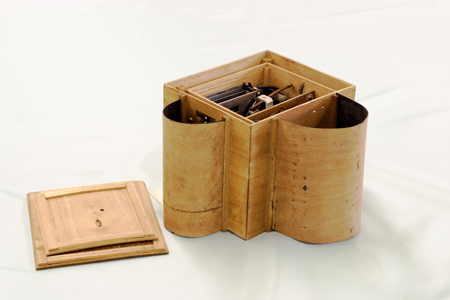
Initial radiosonde used by the Central Meteorological Observatory
Radiosonde incorporating a Morse code transmitter (1949 - 1981)
The instrumental unit of the radiosonde incorporating a Morse code transmitter contained sensors and coding equipment. Mechanical variations in the sensors (an aneroid barometer, a bimetal thermometer and a hair hygrometer) were magnified by the mechanism into pen movements, which were transmitted as Morse code to provide information on pressure, temperature and humidity in the upper atmosphere. The battery was changed from the chemical liquid injection type to the water injection type in later models.
Radiosondes incorporating Morse code transmitters were used from 1949 until 1981. Around 1957, an auto-tracing direction finder system was adopted.
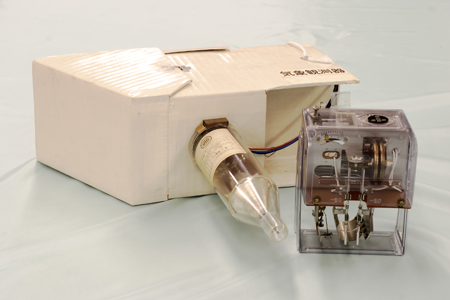
Radiosonde using Morse code transmitter
Echo sonde (1962 - 1981)
The echo sonde was developed for improved aerological wind observation. It consisted of sensors and coding equipment as with the radiosonde incorporating a Morse code transmitter, and also had a receiver. The unit collected pulse waves emitted from the observatory and returned them; the distance between the antenna and the radiosonde could be calculated from the time taken for the pulse to bounce back. Using data and the azimuth of the direction finder, the position of the echo sonde could be determined to clarify wind conditions.
Echo sondes were mainly used in observation at 09 JST from 1962 until 1981.
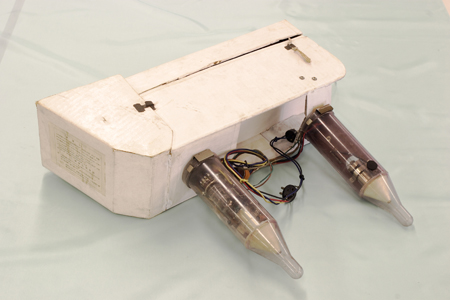
Echo sonde
Modulated carrier wave rawinsonde
The modulated carrier wave rawinsonde was developed for automatic computerized operation. Pressure, temperature and humidity were determined from electrical resistance or capacitance, and the data were converted and transmitted as modulations of the carrier radio wave frequency (1,680 MHz). At the observatory, an auto-tracking direction finder with a dish antenna tracked the rawinsonde and collected the carrier radio waves, and the pressure, temperature and humidity data were decoded. The system allowed simultaneous observation of pressure, temperature, humidity and wind.
RS2-80 rawinsonde (1981 - 1992)
This unit contained an ohmic contact-type aneroid barometer. The temperature sensor was the thermistor type, and the humidity sensor was a carbon hygrometer. Variations in all sensors were measured based on electrical resistance.
RS2-80 rawinsondes were used from March 1981 until September 1992.
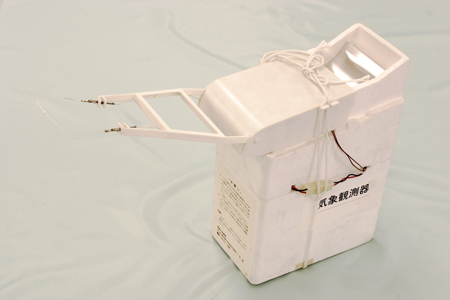
RS2-80 rawinsonde
RS2-91 rawinsonde (1992 - 2009)
This unit contained an electrical capacitance-type aneroid barometer rather than an ohmic contact type, and measured pressure based on variations in electrical capacitance. The temperature sensor was the thermistor type, so temperature was measured based on variations in electrical resistance. The humidity sensor was an electrical capacitance-type polymer membrane hygrometer rather than a regular hygrometer, and measured humidity based on variations in electrical capacitance.
RS2-91 rawinsondes were used from October 1992 until November 2009.
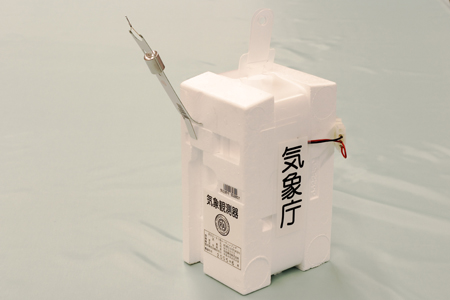
RS2-91 rawinsonde
RS92-SGP GPS sonde
The barometric pressure sensor in this unit is a silicon type, the temperature sensor is a capacitance-type wire thermometer, and the humidity sensor is a thin-film capacitive heating two-sensor hygrometer. Wind direction and speed are calculated from GPS positioning information. The sonde does not require a direction finder.
RS92-SGP GPS sondes have been used since December 2009.
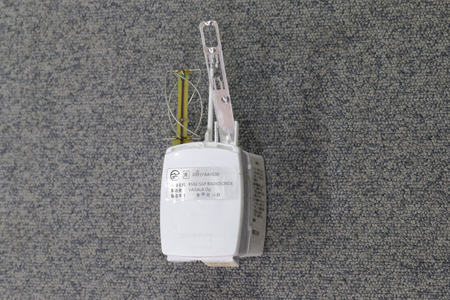
RS92-SGP GPS sonde
RS-11G GPS sonde
The temperature sensor in this unit is a thermistor thermometer, the humidity sensor is a capacitance-type polymer membrane hygrometer, and pressure is calculated from temperature and altitude. Wind direction and speed are calculated from GPS positioning information. This sonde is compact and lightweight, which helps it to fall more safely.
RS-11G GPS sondes were used from July 2013 until February 2018.
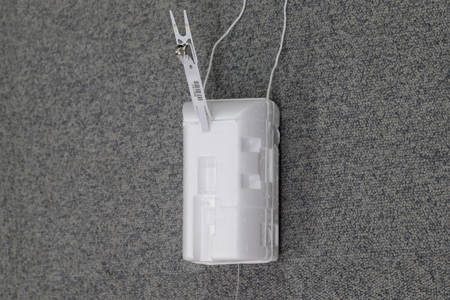
RS-11G GPS sonde
iMS-100 GPS sonde
The temperature sensor in this unit is a thermistor thermometer, the humidity sensor is a capacitance-type polymer membrane hygrometer, and pressure is calculated from temperature and altitude. Wind direction and speed are calculated from GPS positioning information.
iMS-100 GPS sondes have been used since September 2017.
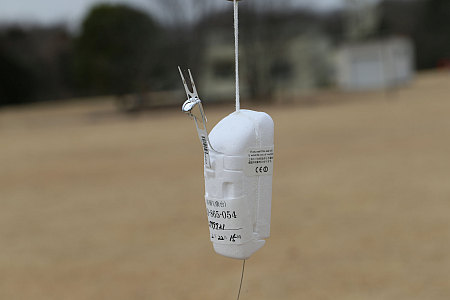
iMS-100 GPS sonde